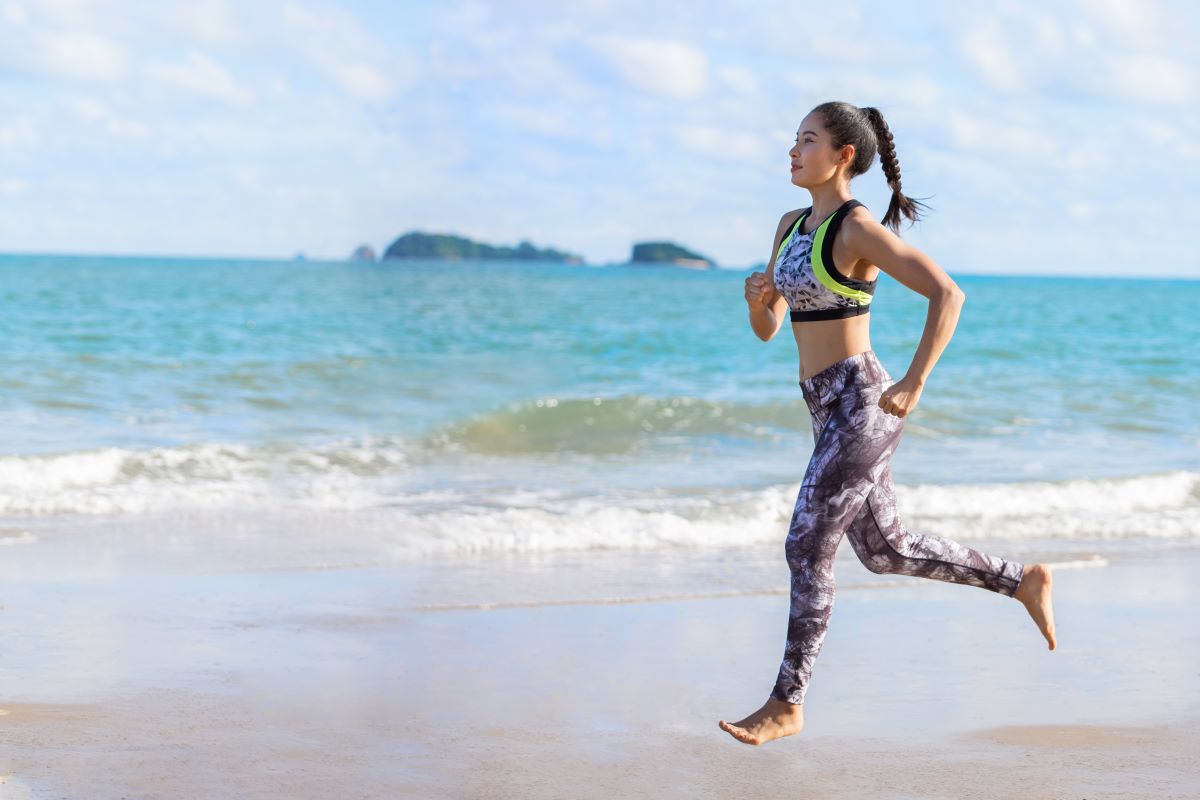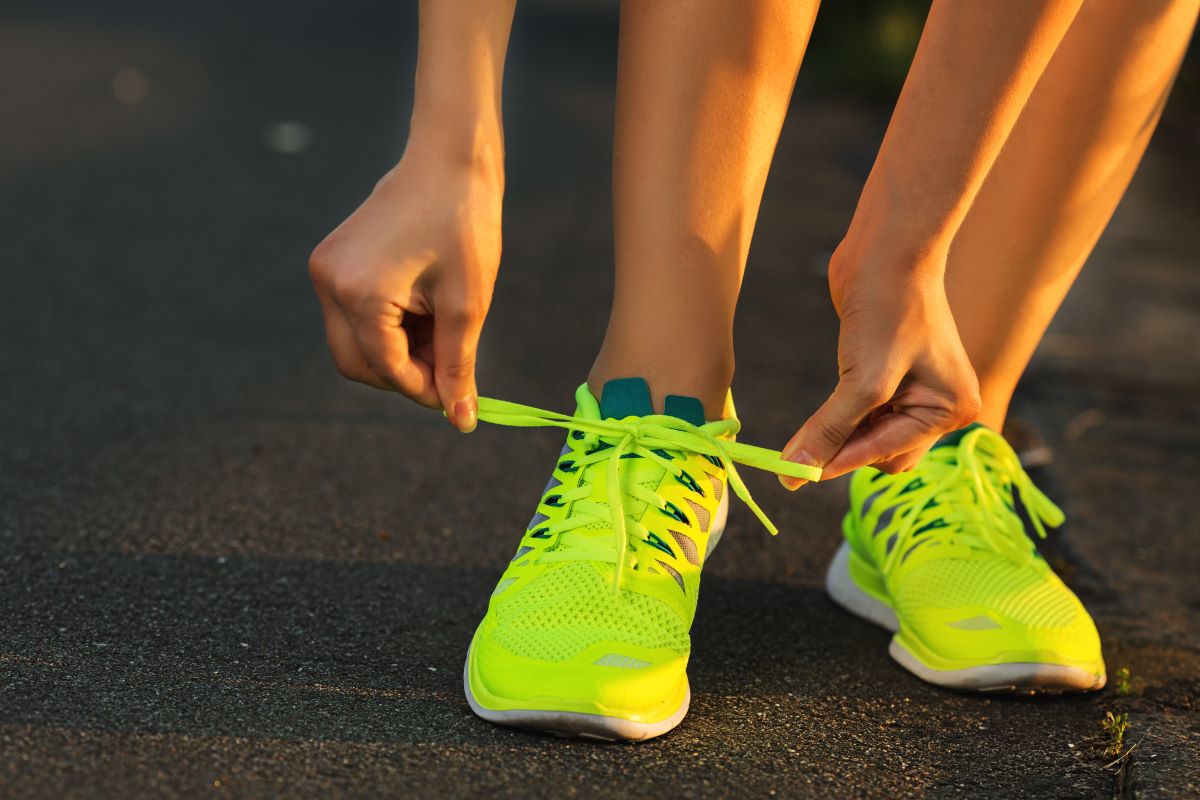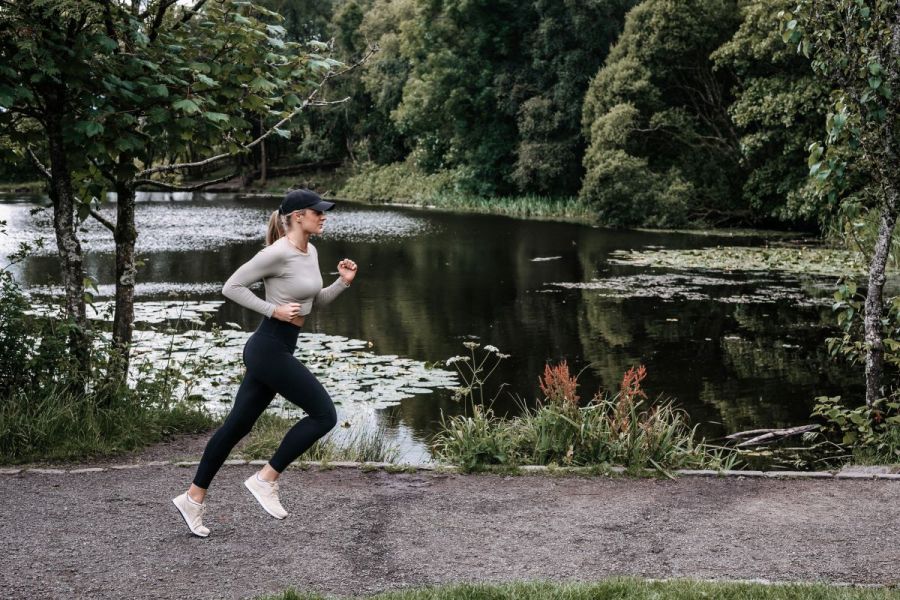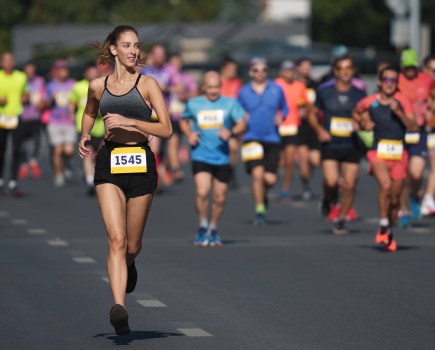Being barefoot is so good for you, and while you may not want to run completely barefoot, except perhaps on sand, there are minimal shoes that help recreate the whole-body benefits. Holly Treacy investigates.
As the nights are beginning to draw in and the weather turns colder, the motivation to lace up your trainers and head out for a run might drop quicker than the temperature. But what if you skipped the footwear step altogether and connected your bare skin to the ground? Already shaking your head? Stick with us! Barefoot running – or using minimal shoes – has more benefits than you might realise.
‘In the modern world it’s easy to opt for physical ease and comfort,’ according to yoga teacher Scarlett Woodford. ‘But one of the downsides is that we’ve pushed our feet into overly cushioned and padded shoes [think trainers] causing your toes to cramp up together over time. Most of the shoes you wear also have a heel, which means your body tilts forward over time, and this can have a profound effect on your posture.’
What happens when you walk barefoot?
So, what happens when you walk barefoot? ‘Your toes can properly spread,’ says Scarlett. ‘Like fingers, the toes are appendages designed to splay out and have strength. Recruiting toes properly by going barefoot increases their strength and grip as they take more of the body’s load.’
Alex Ward, co-founder of barefootrunning brand Bahé, agrees. ‘Fundamentally, if you’re used to wearing “traditional shoes”, then your feet will have adapted to them, meaning your toes will be held more tightly and won’t function as naturally. Traditional shoes have a “toe spring” (upward curve at the toe) meaning your toes don’t hinge as much – in particular your big toe, which should act as a hinge, but can’t in traditional shoes. And, because regular shoes have padded heels, they modify your posture somewhat.
‘When switching to barefoot shoes, the aim is to move to a more natural style of movement and, for most adults, this means re-strengthening and gaining an increased range of movement compared to what is achieved or needed in traditional shoes. It will require you to gain more strength in your feet, Achilles’ and gluteus medius muscles, and more mobility at the toes, ankles and hips,’ he adds.

When walking or running barefoot, your toes can properly spread out, which increases their strength and grip as they take more of the body’s load.
Reconnecting with nature
While it’s probably not practical to go around with bare feet – imagine stepping on something sharp – there are now various shoes designed to mimic or replicate as best possible the barefoot experience. ‘When designing our shoes I did a lot of research and found the book Older Yet Faster by Keith Bateman and Heidi Jones (Older Yet Faster Publications, £24.91) a great resource,’ says Alex.
‘I liaised with the authors and took a lot of their advice onboard. We design shoes to help people reconnect with nature. Initially, we focused on creating the world’s first earthed running shoes that electrically put you back in touch with the earth. We got lots of requests for a barefoot-style shoe, and created our new style, Revive, with the four key features needed for a barefoot-style shoe. Whether running, walking or worn casually, the shoes have been loved by customers who like the added feeling of connectedness with the ground.’
Benefits of barefoot running shoes
Running is one of the most primordial movements humans can do, and if you wear barefoot trainers, you’ll be connecting even more with how your body is designed to move. ‘Barefoot running can be an effective way to alter running mechanics – forcing a “mid-foot” landing, rather than the more common, yet sub-optimal, heel strike,’ explains Tim Hart, personal trainer at luxury fitness club Third Space.
‘Mid-foot landing develops the plantar muscles of the foot, as the body looks to enhance arch support to better absorb force Research shows that plantar muscle development improves with barefoot and barefoot-style shoes more than normal running shoes in the same given timeframe.’
Scarlett agrees that there’s a plethora of benefits. ‘In terms of improving overall posture, walking barefoot means you also lengthen your calves and hamstrings, engage your glutes, stabilise your knees and put your pelvis into more of a posterior [forward] tilt, which can improve posture and lower-back pain,’ she says.

With barefoot shoes, the aim is to move to a more natural style of movement. For most adults, this means re-strengthening and gaining an increased range of movement compared to what is achieved or needed in traditional shoes.
Improve your strength and posture
‘Barefoot-style running increases foot strength, improves posture and reduces the chance of injuries,’ adds Alex. ‘But it’s important to understand that the transition period can take months or years and that you shouldn’t expect to put on a new pair of barefoot-style shoes and run in your normal way at the distances you’re used to; during the transition period it’s important to cut down on mileage, do lots of supplementary strength, balance and flexibility exercises, and listen to your body.
‘When transitioning, technique becomes much more important as the shoes don’t offer so much cushioning, so you need to move to a full-foot landing, which requires more foot strength.’
It’s important to remember that these muscle adaptations take time, so you have to gradually increase exposure to barefoot running. ‘This means slower, shorter runs to begin with, as your feet and body adapt to changes in impact forces, muscle recruitment and running technique,’ says Tim.‘And you needn’t completely replace your running shoes – it’s best to consider barefoot running a complementary training method – one designed to bring additional benefits alongside your normal routine.’
Related content:
- How to start running later in life
- How to make treadmill running less boring
- Benefits of speed hiking & and how to get started
Words: Holly Treacy. Images: Shutterstock and Bahé (lead image)








